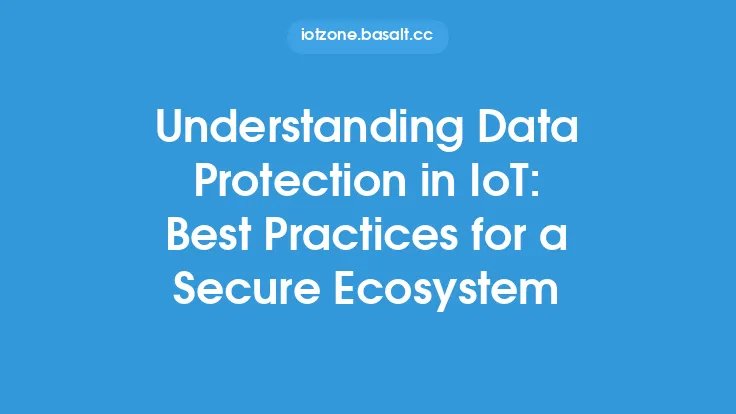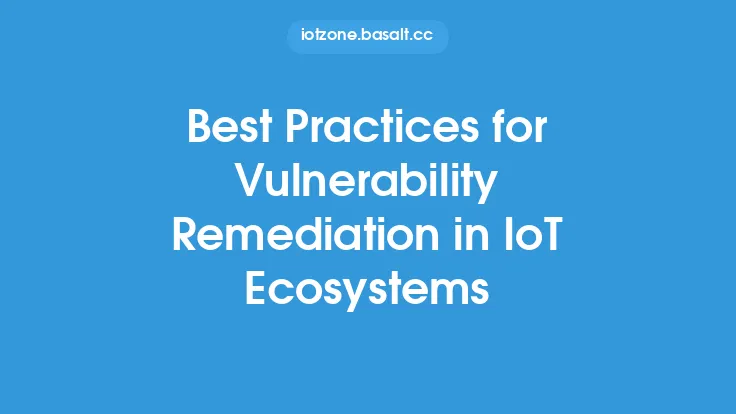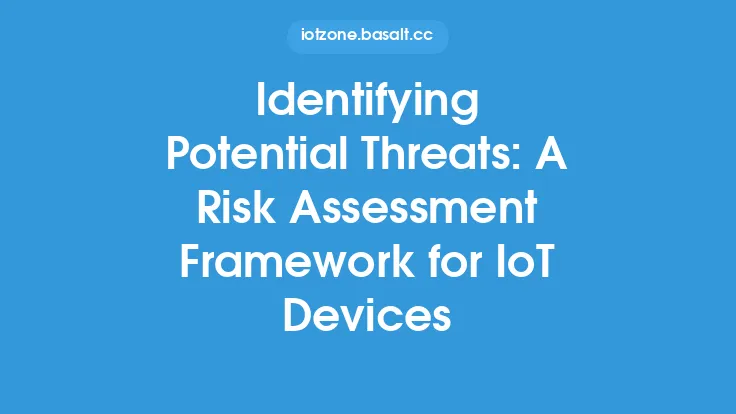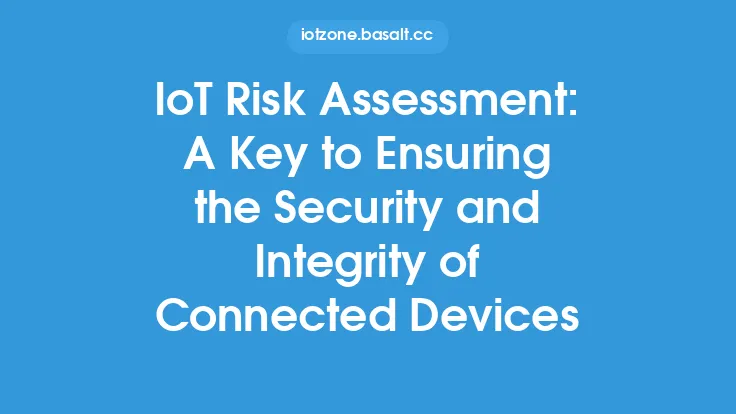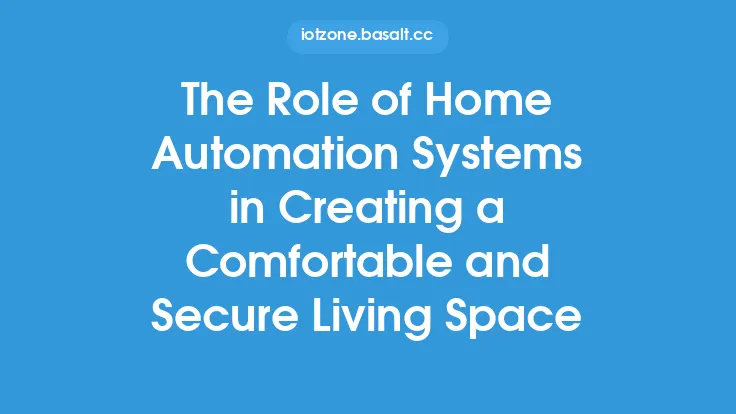The increasing complexity and interconnectedness of IoT ecosystems have created a vast attack surface, making risk assessment and management a critical component of ensuring the security and integrity of these systems. As the number of connected devices continues to grow, the potential risks and vulnerabilities associated with them also increase, making it essential to have a comprehensive risk management strategy in place. In this article, we will delve into the strategies for assessing and managing risk in IoT ecosystems, providing a detailed overview of the technical and non-technical aspects of risk management.
Introduction to Risk Management in IoT
Risk management in IoT involves identifying, assessing, and mitigating potential risks and vulnerabilities associated with connected devices and systems. This includes evaluating the likelihood and potential impact of various threats, such as data breaches, device compromise, and denial-of-service attacks. Effective risk management in IoT requires a comprehensive approach that takes into account the unique characteristics of IoT systems, including their complexity, scalability, and interconnectedness. This involves implementing a risk management framework that includes risk assessment, risk mitigation, and continuous monitoring and evaluation.
Risk Assessment Methodologies for IoT
Several risk assessment methodologies can be applied to IoT ecosystems, including the NIST Cybersecurity Framework, the ISO 27001 standard, and the OCTAVE methodology. These frameworks provide a structured approach to risk assessment, including identifying and prioritizing potential risks, evaluating the likelihood and potential impact of these risks, and developing strategies for mitigating or managing them. In IoT, risk assessment must also take into account the unique characteristics of connected devices, including their limited computational resources, network connectivity, and potential for physical compromise.
Threat Modeling and Risk Analysis
Threat modeling and risk analysis are critical components of risk assessment in IoT. Threat modeling involves identifying potential threats and vulnerabilities associated with connected devices and systems, including device compromise, data breaches, and denial-of-service attacks. Risk analysis involves evaluating the likelihood and potential impact of these threats, taking into account factors such as the potential consequences of a breach, the likelihood of a successful attack, and the effectiveness of existing security controls. In IoT, threat modeling and risk analysis must also consider the potential for cascading failures, where a single device or system compromise can have a ripple effect throughout the entire ecosystem.
Risk Mitigation Strategies for IoT
Several risk mitigation strategies can be applied to IoT ecosystems, including encryption, secure authentication and authorization, and intrusion detection and prevention. Encryption involves protecting data in transit and at rest, using protocols such as TLS and IPsec. Secure authentication and authorization involve ensuring that only authorized devices and users can access IoT systems and data, using techniques such as device authentication, user authentication, and role-based access control. Intrusion detection and prevention involve monitoring IoT systems for potential security threats, using techniques such as anomaly detection, signature-based detection, and behavioral analysis.
Secure Communication Protocols for IoT
Secure communication protocols are essential for ensuring the confidentiality, integrity, and authenticity of data in IoT ecosystems. Several secure communication protocols can be used in IoT, including CoAP, MQTT, and LWM2M. These protocols provide end-to-end security, ensuring that data is protected from interception, eavesdropping, and tampering. In addition, secure communication protocols can also provide authentication, authorization, and accounting (AAA) functions, ensuring that only authorized devices and users can access IoT systems and data.
Device Security and Management
Device security and management are critical components of risk management in IoT. This includes ensuring that devices are properly configured, patched, and updated, as well as implementing secure boot mechanisms, secure firmware updates, and device authentication. Device management involves monitoring device performance, detecting potential security threats, and responding to incidents. In IoT, device security and management must also consider the potential for device compromise, including the use of secure protocols for device communication, secure storage of device data, and secure disposal of devices at end-of-life.
Network Security and Segmentation
Network security and segmentation are essential for preventing the spread of malware and unauthorized access to IoT systems. This includes implementing firewalls, intrusion detection and prevention systems, and network segmentation, using techniques such as VLANs, VPNs, and network access control. Network security and segmentation must also consider the potential for IoT devices to be used as a pivot point for attacks on other systems, including the use of secure protocols for network communication, secure network configuration, and continuous monitoring and evaluation.
Incident Response and Recovery
Incident response and recovery are critical components of risk management in IoT. This includes having a comprehensive incident response plan in place, including procedures for detecting, responding to, and recovering from security incidents. Incident response and recovery must also consider the potential for IoT devices to be used as a vector for attacks on other systems, including the use of secure protocols for incident response, secure incident response planning, and continuous monitoring and evaluation.
Continuous Monitoring and Evaluation
Continuous monitoring and evaluation are essential for ensuring the security and integrity of IoT ecosystems. This includes continuously monitoring IoT systems for potential security threats, evaluating the effectiveness of security controls, and updating risk assessments and mitigation strategies as needed. Continuous monitoring and evaluation must also consider the potential for new threats and vulnerabilities to emerge, including the use of threat intelligence, vulnerability scanning, and penetration testing.
Conclusion
Assessing and managing risk in IoT ecosystems is a complex and ongoing process that requires a comprehensive approach to risk management. This includes implementing a risk management framework, conducting regular risk assessments, and developing strategies for mitigating or managing potential risks. By following the strategies outlined in this article, organizations can help ensure the security and integrity of their IoT ecosystems, protecting against potential risks and vulnerabilities and ensuring a secure future for connected devices and systems.
